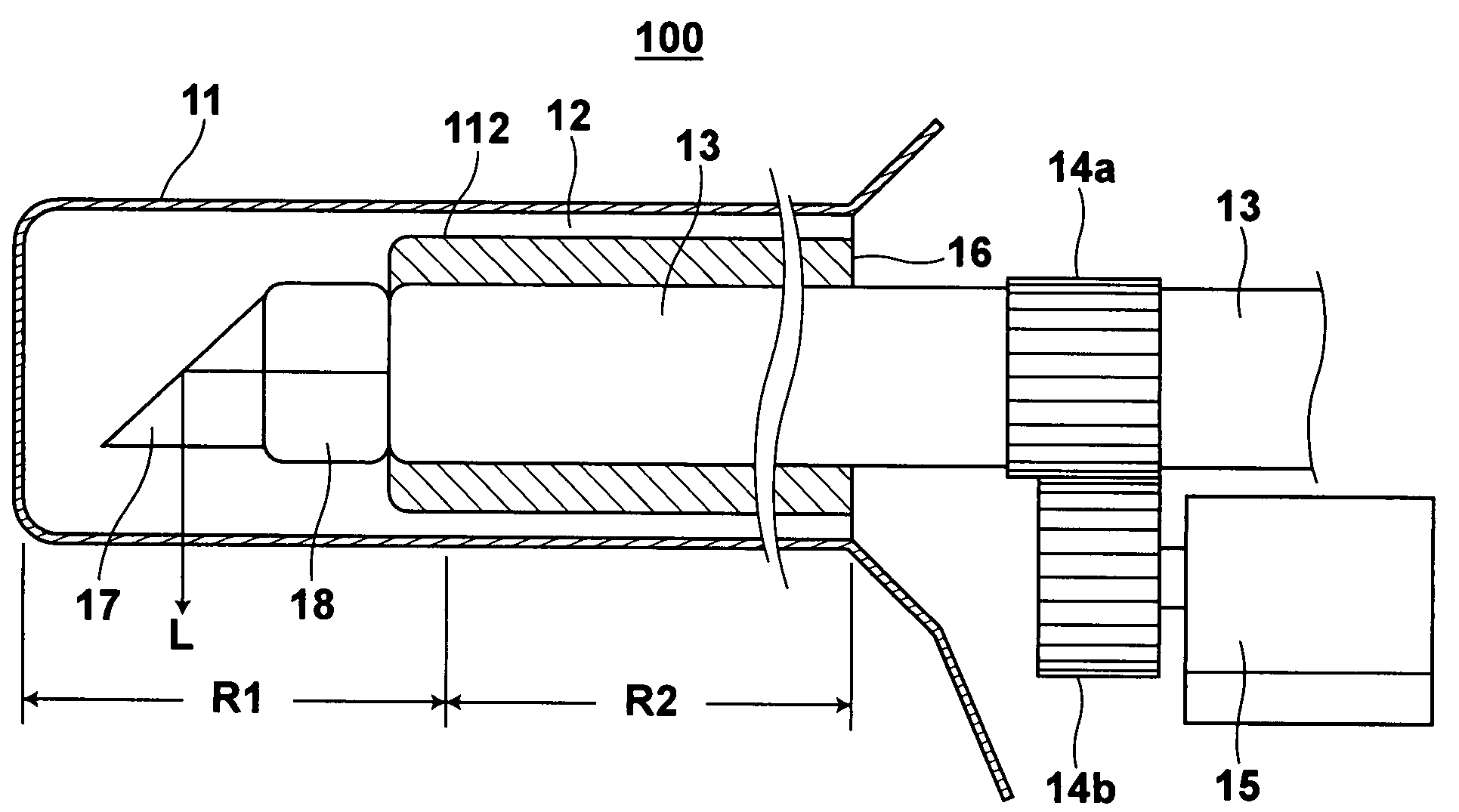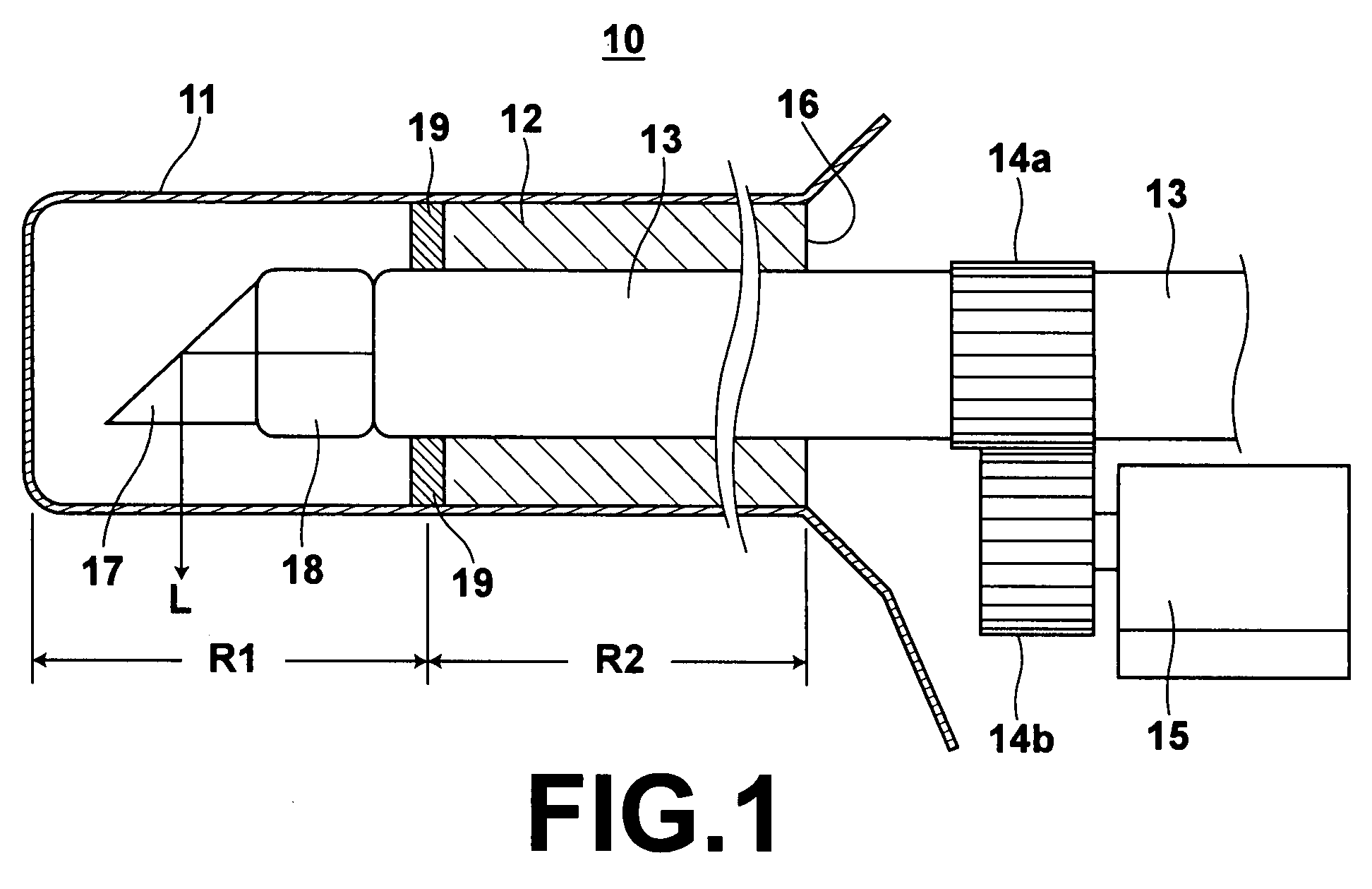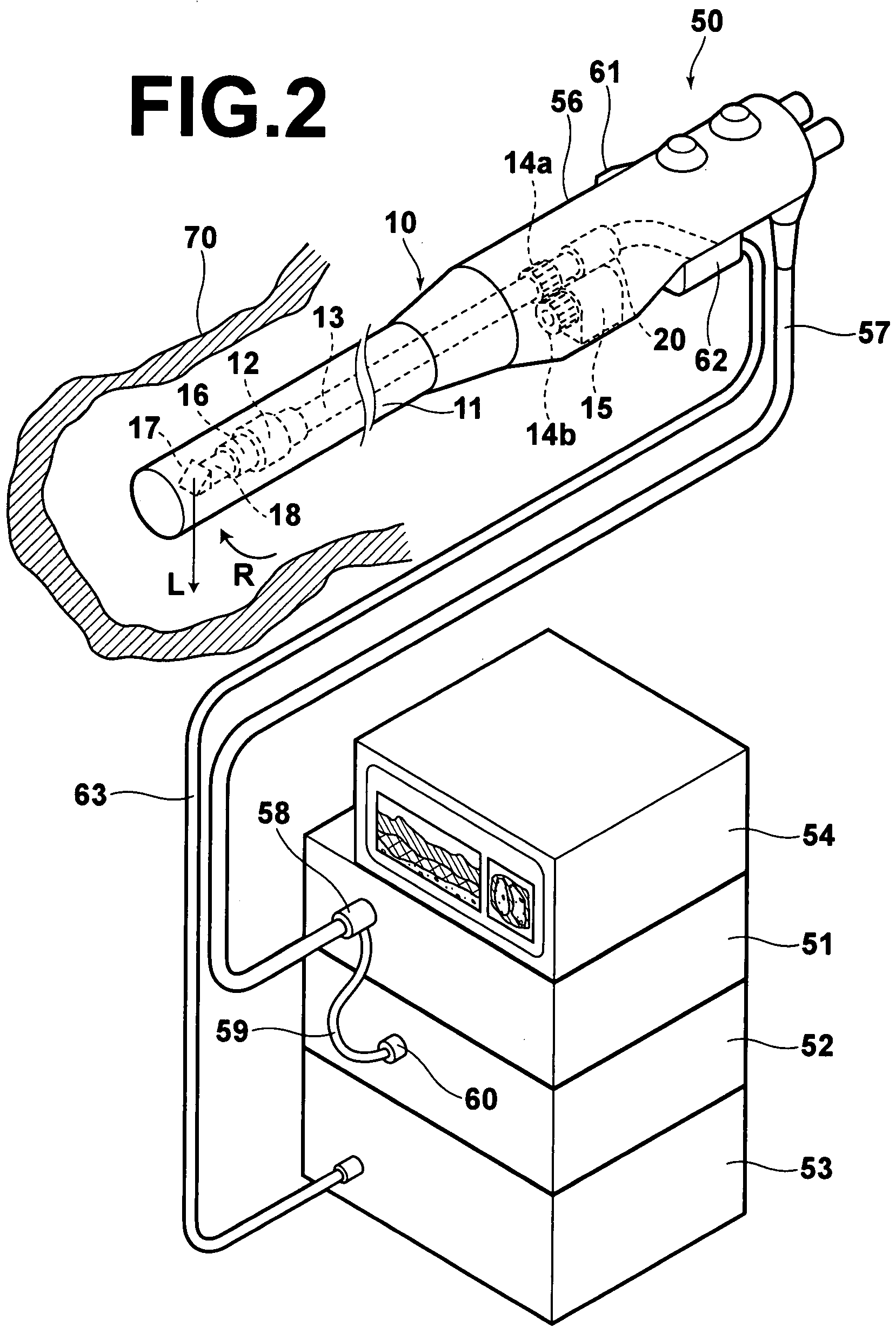Probe and optical tomography system
a technology of optical tomography and probe, which is applied in the field of optical probes, can solve the problems of deteriorating resolution, affecting the accuracy of signals, so as to suppress the stress change, prevent the leakage of liquid from the outer envelope of the probe, and increase the heat capacity
- Summary
- Abstract
- Description
- Claims
- Application Information
AI Technical Summary
Benefits of technology
Problems solved by technology
Method used
Image
Examples
Embodiment Construction
[0045]Embodiments of the present invention will be described in detail with reference to the drawings, hereinbelow. FIG. 1 shows a side shape partly cut-away of an optical probe 10 in accordance with a first embodiment of the present invention. The optical fiber 10, for example, forms a front end portion of an endoscope which forms a part of an optical tomography system. FIG. 2 shows an overall shape of the optical tomography system.
[0046]The optical tomography system will be first described in brief with reference to FIG. 2. The system comprises an endoscope 50 including the optical probe 10; a light source unit 51, a video processor 52, and an optical tomographic processing system 53 to which the endoscope 50 is connected; and a monitor 54 connected to the video processor 52. The endoscope 50 comprises an outer envelope 11 which is flexible and elongated, a control portion 56 connected to the rear end of the endoscope outer envelope 11 and a universal code 57 which extends outward...
PUM
 Login to View More
Login to View More Abstract
Description
Claims
Application Information
 Login to View More
Login to View More - R&D
- Intellectual Property
- Life Sciences
- Materials
- Tech Scout
- Unparalleled Data Quality
- Higher Quality Content
- 60% Fewer Hallucinations
Browse by: Latest US Patents, China's latest patents, Technical Efficacy Thesaurus, Application Domain, Technology Topic, Popular Technical Reports.
© 2025 PatSnap. All rights reserved.Legal|Privacy policy|Modern Slavery Act Transparency Statement|Sitemap|About US| Contact US: help@patsnap.com



